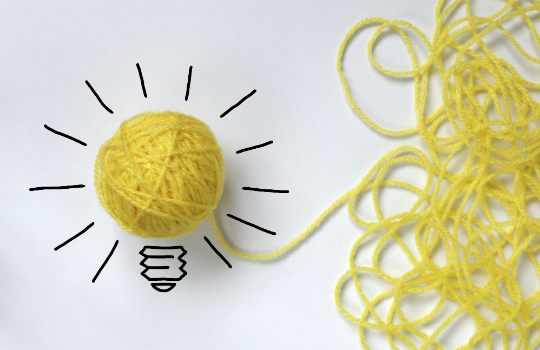Don't freak out - Martin Couzins is here to talk about the 'i' word: innovation.
‘Innovate or die’ is a familiar rallying cry. If we don’t innovate, our businesses face extinction; clearly that’s a troubling thought. If you read Harvard Business Review, Business Week or Forbes you will be drip-fed articles with similar headlines on a regular basis – indeed, here is a recent one on the BBC with that exact headline.
Innovation is being talked about more and more because business needs to respond to the changing environment in which it operates. Innovation offers a way to do that. You only have to look at the annual Emerging Technology Hype Cycle from technology analyst Gartner, which tracks the adoption time of new technologies, to see how quickly technology is changing the way we lead our lives and do business.
For training businesses and internal L&D teams it is the ability to respond to this changing environment that makes an innovation mindset, or the ability to innovate, so necessary. Last year Learning and Performance Institute chairman Donald Taylor wrote an article asking ‘Are you in the training ghetto?’. This article sets the scene in which learning professionals now operate. The question is, how quickly can you and your team respond to change? The role innovation has to play is about testing out different elements of our ideas to understand how they might work. Innovation is really about designing and executing experiments that help us learn what does and doesn’t work, so we can adapt and improve. It is an iterative process.
"The question is, how quickly can you and your team respond to change?"
Eric Ries, author of 'The Lean Startup', a book about innovation, calls this “Measured Learning”. If you work in corporate L&D in any capacity then the notion of trying to measure any learning will instantly start to make you feel uncomfortable. Fear not, this is much more tangible. Ries suggests a model of build, measure, learn, which is pretty obvious really - but then the best advice usually is.
Build-measure-learn cycle
There are many reasons why we find it hard to implement simple approaches like this when it comes to innovation. It’s easy to fall back on the old mantra of 'that won’t work in our culture' or 'we don’t have budget for that'. But these are excuses we tell ourselves to avoid having to deal with change and worse still, having to convince others of the need to change. Innovation is generally seen as a nice-to-have, something to do when you have a bit of downtime. Now, I guarantee that no leader in any organisation will admit this, but the way our companies are set up, the way we motivate and measure our people is usually in conflict with innovation. The larger the company the harder it is to take an idea and make it happen.
So how do we combat this?
Team up
Who are the people who can help? Who are the open-minded, adventurous, inquisitive, curious colleagues who are willing to think differently? If you can’t find them (or they don’t exist), what about the like-minded people in other organisations? Try searching Meetups for local sessions of people interested in the same stuff, or join a local entrepreneurs group. These are great places to get a fresh perspective on an idea or problem. If you can’t find one then start one. It’s easier than you think.
Make space to experiment
What could you stop doing to make some room to think? How might you run small experiments below the radar to start the build, measure, learn process? A huge part of being innovative is being opportunistic. Most ideas have a right time and place. You need to be a little patient, but over the years I’ve found that this is the key to making things happen. Maybe it’s a new client, maybe it’s a damning audit report, or a software upgrade – whatever the trigger, every idea has a moment when it will be that much easier to sell. That’s not to say that you should sit on them forever - sometimes you need to experiment just to get the idea to a point where you understand it enough to explain it to others when the time is right.
Structure and process
Innovation is a process, it always has been. From '99% perspiration, 1% inspiration' to 'Minimum Viable Products' and 'Measured Learning' – it’s always been about trial and error. We now have access to many processes and theories around how to innovate, most of them being very similar. So it’s important to understand these theories and processes and then to incorporate them in our thinking. If we do this in a methodical way, putting ideas into action becomes a lot easier.
If you would like to explore how you can innovate your training business or learning function then join us on our MOOC, Innovating your training business with technology, which is now live.
Martin Couzins is founder of LearnPatch, co-founder of MOOCPro and a former editor of TrainingZone










